Since the founding of the Will Eisner Comic Industry Awards (and their previous incarnation, the Kirby Awards), the following individuals have been inducted into the Hall of Fame.
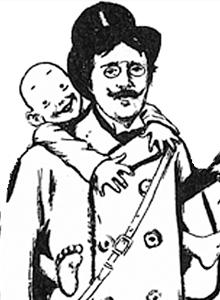
R. F. Outcault
1863–1928
Richard Felton Outcault was one of the pioneers of the American comic strip, having created The Yellow Kid (1894) and Buster Brown (1902), among other early titles.
Inducted 2011

Dennis O’Neil
1939–2020
In 1968 DC editor Julius Schwartz asked Dennis O’Neil to revamp Batman. O’Neil and artist Neal Adams took the character back to his roots and created the version of Batman that has been an inspiration for many of the Warner Bros. films and current comics. In 1970, Dennis again collaborated with Adams and Schwartz to produce the Green Lantern/Green Arrow series. Among his other lauded works for DC are The Shadow with Michael Kaluta and The Question with Denys Cowan.
Inducted 2014
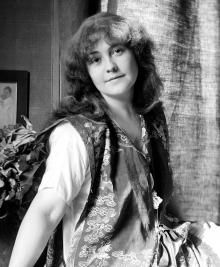
Rose O’Neill
1874–1944
Rose O’Neill was an American cartoonist and writer who, at a young age, became the best-known and highest-paid female commercial illustrator in the United States. A four-panel comic strip by O’Neill was featured in a September 19, 1896, issue of Truth magazine, making her the first American woman to publish a comic strip. She earned her international fame and fortune by creating the Kewpie, the most widely known cartoon character until Mickey Mouse. Her Kewpie cartoons, which made their debut in a 1909 issue of Ladies’ Home Journal, were made into bisque dolls in 1912 by J. D. Kestner, a German toy company. The dolls became immediately popular and are considered to be one of the first mass-marketed toys in the United States.
Inducted 2022
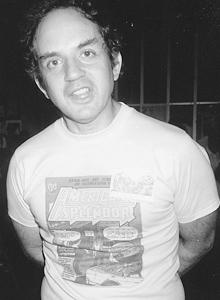
Harvey Pekar
1939–2010
The first issue of Harvey Pekar‘s American Splendor appeared in 1976. Between then and 1991 he self-published 16 issues, drawn by a variety of artists, most notably R. Crumb and Frank Stack. Subsequent issues were published by Dark Horse and Vertigo. His book with Joyce Brabner Our Cancer Year garnered numerous awards, and Harvey became somewhat of a celebrity by appearing on the Letterman show. In 2003 a film version of American Splendor brought Harvey back into the spotlight.
Inducted 2011
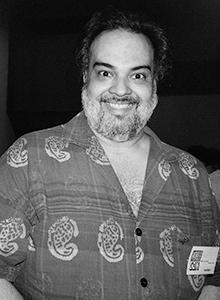
George Pérez
1954–2022
George Pérez started drawing comics at Marvel in 1974. After working on such titles as Fantastic Four, The Inhumans, and The Avengers, he developed a reputation as the artist who liked to draw group books. In addition to his Marvel stints, he is best known for his work on DC’s The New Teen Titans, Wonder Woman, and Crisis on Infinite Earths.
Inducted 2017
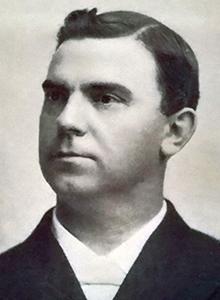
H. G. Peter
1880–1958
At age 61, Harry G. Peter began drawing Wonder Woman, collaborating with writer William Moulton Marston. Peter started with the Amazon’s first appearance in Sensation Comics in 1941 and continued drawing the feature for close to two decades. Wonder Woman #97, cover dated April 1958, was Peter’s last issue.
Inducted 2017
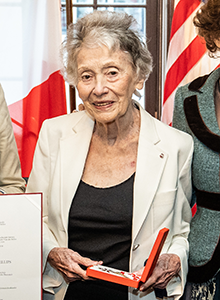
Lily Renée Phillips
1921–2022
Lily Renée Wilhelm Peters Phillips was the star artist for comics publisher Fiction House, where she worked from 1943 until 1948. She drew such strips as Werewolf Hunter, Jane Martin, Senorita Rio, and The Lost World. She was known for her striking covers and “good girl” art. She later drew Abbott & Costello Comics with her husband at the time, Eric Peters, and Borden’s Elsie the Cow comics. She left comics in the 1950s; she is still living and was a guest at Comic-Con in 2007.
Inducted 2021
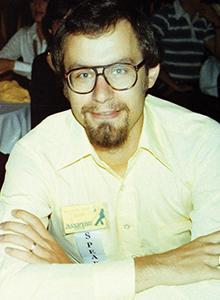
Richard Pini
1950–
Richard and Wendy Pini created the much-loved fantasy series Elfquest, widely regarded as the first manga-influenced graphic novel series with a high fantasy theme published in the U.S. The Pinis were among the first independent publishers of their own comics, founding Warp Graphics in 1978. Richard ran Warp full-time from 1981 until 2003. In 2018, Elfquest concluded its 40-year run with Dark Horse Comics. The series has millions of readers around the world and continues to gain new fans. Wendy has also drawn and written comics for Marvel, DC, First Comics, and other publishers, including two graphic novels based on the 1980s TV series Beauty and the Beast. More recently, she created a graphic novel and animated webcomic based on the Edgar Allan Poe horror story “Masque of the Red Death,” which has been adapted into a musical.
Inducted 2019
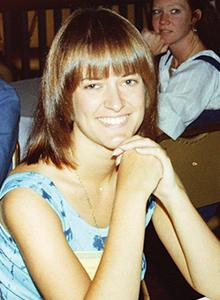
Wendy Pini
1951–
Wendy and Richard Pini created the much-loved fantasy series Elfquest, widely regarded as the first manga-influenced graphic novel series with a high fantasy theme published in the U.S. The Pinis were among the first independent publishers of their own comics, founding Warp Graphics in 1978. Richard ran Warp full-time from 1981 until 2003. In 2018, Elfquest concluded its 40-year run with Dark Horse Comics. The series has millions of readers around the world and continues to gain new fans. Wendy has also drawn and written comics for Marvel, DC, First Comics, and other publishers, including two graphic novels based on the 1980s TV series Beauty and the Beast. More recently, she created a graphic novel and animated webcomic based on the Edgar Allan Poe horror story “Masque of the Red Death,” which has been adapted into a musical.
Inducted 2019
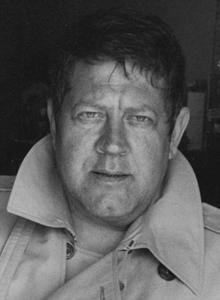
Hugo Pratt
1927–1995
Hugo Pratt was an Italian who grew up in both Venice and Ethiopia. The aspiring cartoonist moved to Argentina in 1950, where he created a number of adventure comic strips. He returned to Italy in 1965, and in 1970 he created Corto Maltese, an adventure series set in the South Seas, for the French comics weekly Pif. This strip became very successful, and Pratt’s distinctive art style became highly influential on cartoonists around the world.
Inducted 2005
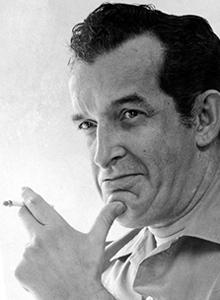
Antonio Prohías
1921–1998
Antonio Prohías is best known for his 30 years of work with MAD magazine on his comic feature “Spy Vs. Spy,” which has been adapted into a series of animated shorts, several video games, a series of live-action television commercials, and a Sunday strip. In the late 1940s Prohias began drawing cartoons for the prestigious Cuban newspaper El Mundo. His wordless material enjoyed international appeal, and by the late 1950s he was the president of the Association of Cuban Cartoonists. On May 1, 1960 (just three days before Castro gained control of El Mundo and the rest of Cuba’s free press) Prohías fled Cuba for New York City.
Inducted 2017
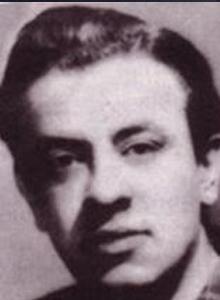
Mac Raboy
1914–1967
Mac Raboy‘s stunning artwork and covers for Captain Marvel Jr. and Master Comics, published by Fawcett, make them both highly prized series among Golden Age collectors. He left comic books in 1948 to draw the Flash Gordon Sunday strip, which he did until his death in 1967.
Inducted 1999
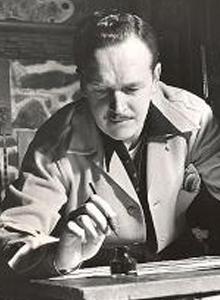
Alex Raymond
1909–1956
Alex Raymond made his place in comics history not only by creating Flash Gordon but for influencing artists such as Al Williamson with his beautiful line work and science fiction settings. Raymond’s other comic strip work includes Secret Agent X-9, Jungle Jim, and Rip Kirby.
Inducted 1996
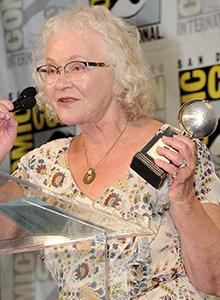
Trina Robbins
1939–
A pioneer of the underground comix movement, Trina Robbins published the first comic book produced entirely by women, It Ain’t Me, Babe. From there she went on to co-found the Wimmin’s Comix collective, which helped launch the careers of many other prominent women cartoonists in the underground and alternative field. Her nonfiction books include The Great Women Superheroes and A Century of Women Cartoonists. She has also edited a number of collections of early women cartoonists’ reprinted work, including The Brinkley Girls: The Best of Nell Brinkley’s Cartoons from 1913-1940 (Fantagraphics) and Tarpé Mills’ Miss Fury (IDW).
Inducted 2013
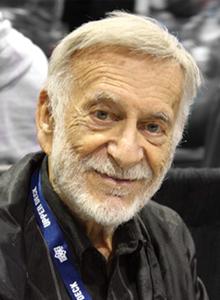
Jerry Robinson
1922–2011
As Bob Kane’s first assistant on Batman, artist Jerry Robinson was the first to draw both Robin and The Joker, and he played a major role in their creations. He drew numerous Batman stories and covers for Detective and Batman between 1939 and 1946. In the late 1940s, he drew such features as “The Vigilante” and “Jonny Quick.” He moved to the comics strip realm in the 1950s and spent the next several decades in that world, created his own cartoonists’ syndicate, and wrote the seminal book The Comics: An Illustrated History of Comic Strip Art.
Inducted 2004